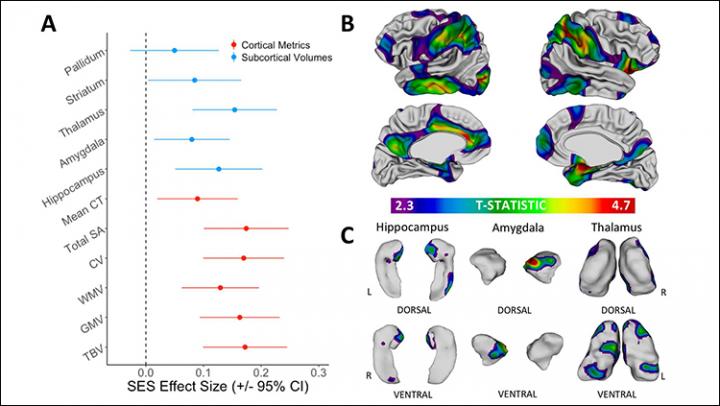
IMAGE: Main effects of SES on global and local anatomy, after controlling for age and sex. (A) Standardized effect size of SES on each global cortical and subcortical brain measure estimated.
Credit: McDermott et al., JNeurosci (2018)
The relationship between socioeconomic status (SES) and brain anatomy is mostly stable from childhood to early adulthood, according to a longitudinal neuroimaging study of more than 600 healthy young people published in JNeurosci. This finding draws attention to the importance of preschool life as a period when associations between SES and brain organization may first develop.
Cassidy McDermott, Armin Raznahan, and colleagues analyzed brain scans of the same individuals collected over time between five and 25 years of age. Comparing this data to parental education and occupation and each participants’ intelligence quotient (IQ) allowed the researchers to demonstrate positive associations between SES and the size and surface area of brain regions involved in cognitive functions such as learning, language, and emotions. In particular, this is the first study to associate greater childhood SES with larger volumes of two subcortical regions – the thalamus and striatum – thereby extending previous SES research that has focused on its relationship to the cortex. Finally, the researchers identify brain regions underlying the relationship between SES and IQ. A better understanding of these relationships could clarify the processes by which SES becomes associated with a range of life outcomes, and ultimately inform efforts to minimize SES-related variation in health and achievement.

